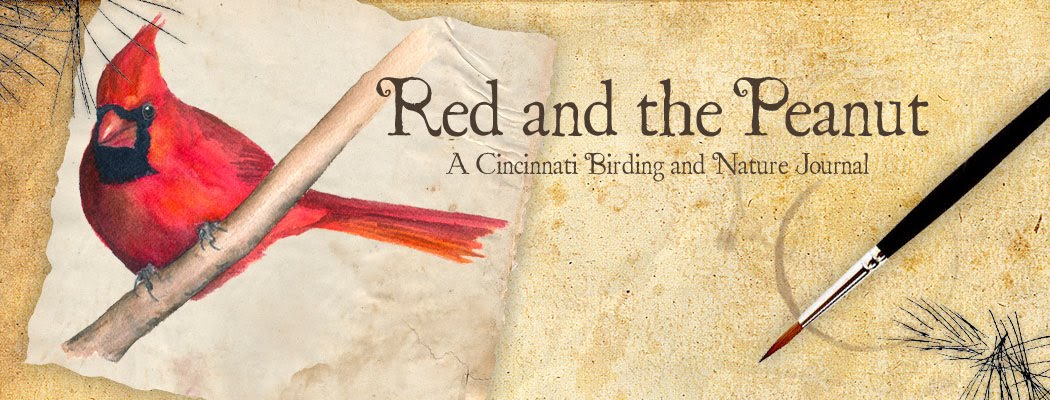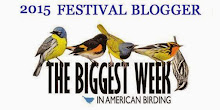I ran up to the rookery today at lunch out of curiosity. I didn’t think any herons would be there because it was the middle of the day and the herons aren’t sitting on eggs yet, and sure enough, only one bird was there, and he was only there briefly. I assume that I'll know when eggs have been laid because then one of the parents will remain in the nest at all times. A
Tufted Titmouse was active and singing
Peter, Peter, Peter heartily, but no action in the rookery. On my way back to the office, I saw a
Peregrine Falcon sitting on a wire. First time I’ve seen one there. I asked Bill and Larry if they had seen him, and Bill confirmed one is hanging around the office. Yeah!

Beautiful blue lunchtime sky, but no beautiful blue herons!
This evening, I headed over to the heronry at 4:45, a little earlier than usual, but I hoped many of the herons would have returned for the evening already…and they had! The number of occupied nests has definitely increased since my trip last week, and the herons are talking a lot more than last time too. There are at least 13 more occupied nests. Unfortunately, I could only stay for about 30 minutes, which wasn’t enough time to watch all of them come home, but progress is definitely happening! On the 13th, the 7 nesting couples were centered in one large tree. Today, enough new birds had arrived that they had pushed out to two surrounding trees.

Eleven newly occupied nests are in the tree behind
the original tree, and another is in a tree to the right of it.
I just listened and watched, and that was very nice. If I can fit in the time, I’d love to spend a couple of hours just observing and writing about colony behavior. I could see several different types of courtship displays today:

One of three couples preening each other.

This couple kept walking around each other in the nest.

This heron was stroking his mate along
the neck and back with this head and bill.
I also witnessed one small property skirmish with some pretty cool threat displays, including a sharp bark followed by snapping the bill together several times:

He would bark and then snap his bill together
several times. Even though I am quite far
from the rookery, the bark was loud.

































